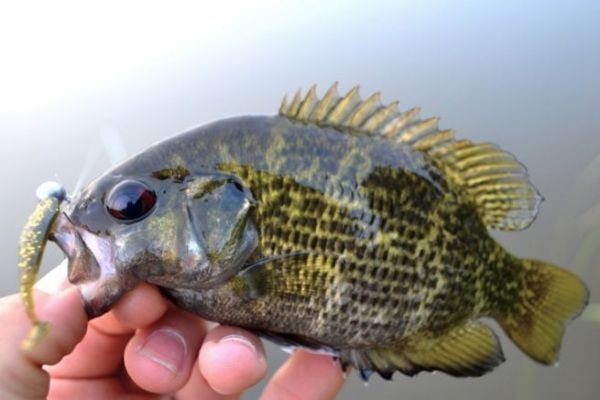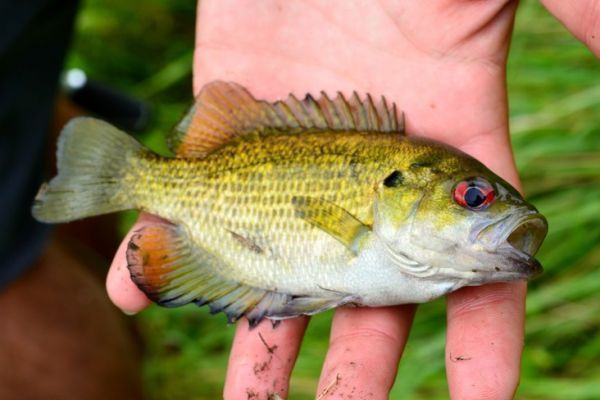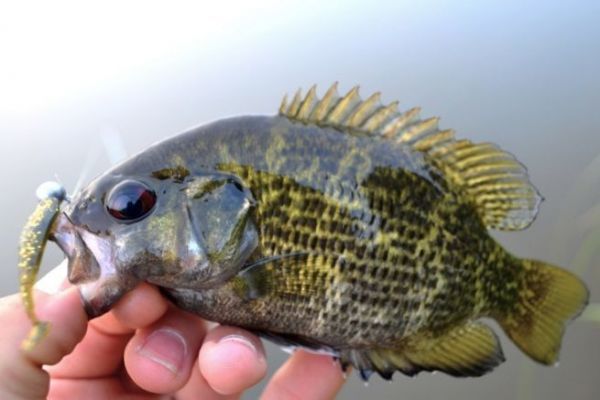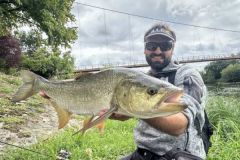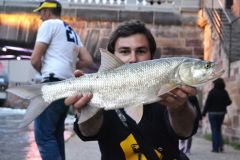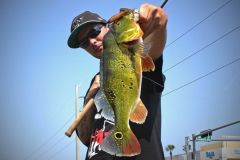Freshwater Rockfishing
Let's equip ourselves to catch this shy inhabitant of our waters. For maximum thrills, choose ultra-light tackle. This equipment will be indispensable for perceiving the subtle touches of the crappie. The must-have is rockfishing tackle.
The scion or full blank will be a considerable asset for detecting the most discreet bites. The length of the rods will allow you to quickly remove rock crabs from their holes and avoid snags or cuts caused by the line rubbing against the rocks.
For my part, I use a rockfishing rod (an Illex Ashura Pepper micro jig special), its power reserve allowing me to fight a nice perch, a zander or a surprise barbel. What's more, the solid white tip allows you to feel the bites both tactilely and visually!
Also worth noting is the arrival on the market of ultra-light, full-blank rods, which promise outstanding sensitivity, unequalled sensations on the finest fish and surgical precision of animations. Experts in ultra-fine fishing will also be able to stalk bluegill in bait finesse. The technique seems to be gaining ground more and more in France, and the few enthusiasts will be able to "scrape" for crappie with this type of equipment without worry.
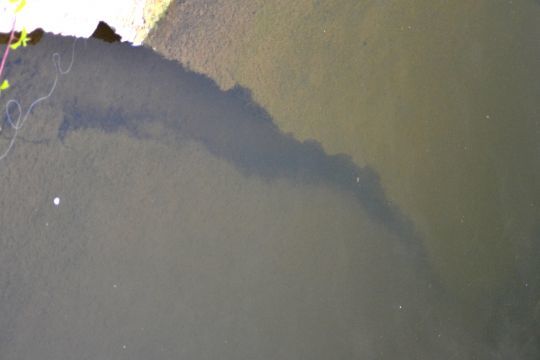
To equip your rockfishing rod, a reel size 1000 to 2500 is ideal. Fill it with fluorocarbon 6 to 8 lbs, from 16 to 22/100, or with braid from 4 to 6 lbs. In the latter case, use a fairly long fluorocarbon leader (1.5 to 2 m). Fluorocarbon will be discreet and will resist abrasion in rocks, because let's remember once again that stalking bluegills is freshwater rockfishing, and line rubs a lot in rocks.
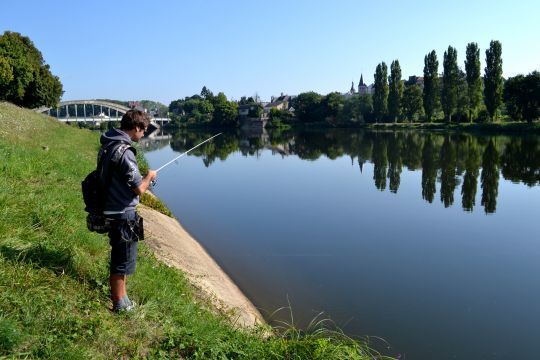
When it comes to lures, aim small. Lures from 1" to 3" (2.5 to 7.5 cm) are ideal. Small shads (Illex MAgic slim shad 2" Rockvibe 2", Gunki grubby shad...) are versatile and will allow you to explore a lot of ground and holes. Choose highly mobile models that move at the slightest wiggle. Indeed, animations must be of low amplitude to leave the lure in front of the "hole" of the bluegill. All in all, soft creature lures, shads, commas, tubes or small worms are ideal, provided they are highly mobile.
Note that natural colors, such as cola, brown or green, seem to be more appropriate than flashy colors or white.
The basic technique is to mount these small soft lures on lead heads weighing from 1 to 3 grams or on micro jigs. A light texas rig can also be used in very crowded areas. Use a n°4 Texan hook (type Illex finesse wide gape texas) with a 1 to 3 gram bullet. The neko rig (a small worm quilted in wacky with an insert as ballast) will seduce the most wary of crappies.
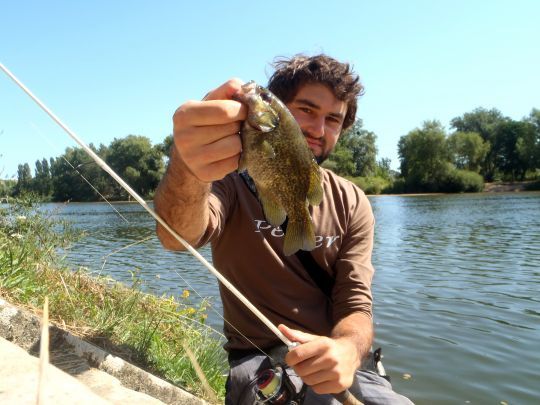
Last but not least, one of the best lures (and this is the American way) is the marabou jig. Its marabou feather skirt sets in motion at the slightest animation. The only drawback is that these highly effective lures are rarely used in France. Worth considering.
The last tool in your arsenal is a pair of polarized glasses. Not to spot cracks in the rock, but to see faults and distinguish relief from boulders.
Let's get him!
Bluegill stalking is done from the shore, in "streetfishing" mode. You need to prospect shallow areas, locate a crevice or roots and slide the lure into or in front of it. Bring the lure to life gently on the bottom, in front of the hole. It's easy to see why it's so important to have highly mobile lures.
The touch is characterized by a heaviness or slight displacement of the banner. This is explained by the way the sunfish grabs its prey. The bluegill sucks the lure from the bottom and either returns to its hole or stays put. In case of doubt, you need to hook wide and move the fish away from the rocks. Despite its small size, the bluegill is a proud fighter. The fight resembles that of a small black bass, except that the sunfish probes instead of trying to jump out of the water.
Another important point is that sunfish often suck the lure through their head. I've seen this for myself, as I've observed the very small number of misfires on the hooks. Short shanks on lead heads are therefore preferable, as they allow the lure to work better and result in fewer misses. I use Illex Straight Jig heads.
Finally, the drop shot is not suitable for crappie fishing. I tried it without success, the drop shot only bringing me perch. This enabled me to demonstrate the sunfish's clear propensity to feed on the bottom, rather than on unstuck prey.
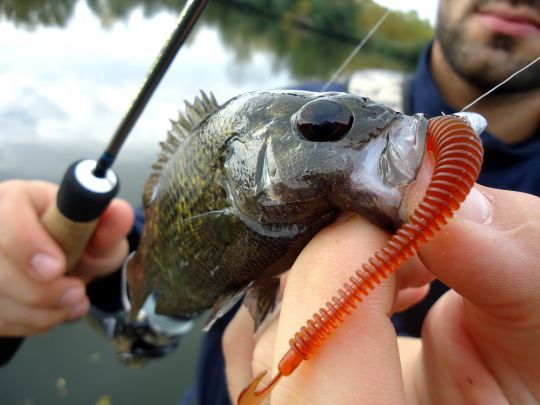
Once you've caught your first sunfish, it's not uncommon to "touch" several others nearby. Don't hesitate to insist. Although not gregarious, sunfish gather in groups of a few individuals in marked areas, and it's not unusual to see three or four in a small area.
Rock & Bass
In conclusion, this pearl of France's fishing heritage, though rare, is well worth a look. Its fishing is exciting, subtle and fun. What's more, the "collector's fish" aspect is well worth a detour to enjoy the magnificent Nièvre department. An atypical fish that will give you a change of scenery and lure you like rockfishing scorpion fish... But in freshwater!
